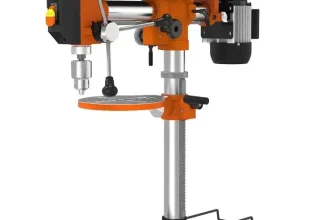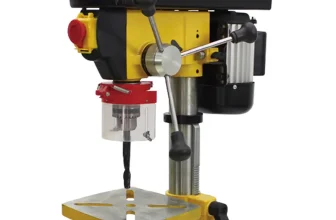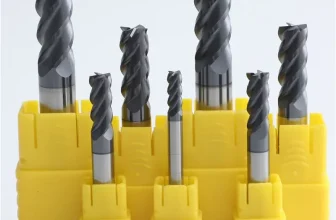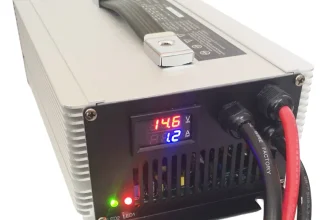The best drill press for woodworking is pretty much the same drill press that is best for metal.
The only real difference is the bits and other tools used with the dill press when using it for woodworking.
The basic principal is exactly the same, you are rotating either a tool of some sort, or in some cases you are rotating the workpiece using the drill press spindle.
Spindle Speed
Probably the most important thing to consider when selecting the best drill press for woodworking is the drill press’s available spindle speeds.
In general woodwork will be performed at a higher RPM than when working with metals.
This is especially true when doing things like drilling larger holes.
Wood vs Metal
When drilling larger holes in metal the faster spindle speeds of a woodworking drill press will tend to overheat and dull drill bits.
This causes lost time and excessive wear and tear on drill bits. Quality drill bits are not cheap, so dulling drill bits can be costly and something to definitely avoid.
Most of the time you don’t need to worry about the available speeds when selecting the best drill press for woodworking since it is normally more difficult to find drill presses that can accommodate the lower metal speeds rather than the higher speeds that are better for woodworking.
Workpiece Capacity
This is probably obvious, but also make sure the woodworking drill press you choose is large enough to accommodate the size of the material you plan to work with.
Other than the spindle speed and size of the drill press most of the other nice things to have are the same for both wood and metal.
Some of these nice bells and whistles are:
Laser guide
A laser guide will project a laser where the drill will pass though the workpiece. This is very handy to know exactly where you will drill and prevent unneeded workpiece repositioning.
Tilting work platform
Most drill presses these days have a tilting work platform, but it is always nice to make sure. A tilting work platform allows you to easily drill angled holes. Generally a tilting work platform will tilt 45 degrees in both directions.
DRO (Digital Readout)
A DRO is pretty much what it sounds like, it is a digital display of some parameter of the drill press. The most common DRO is RPM, but there are some units that display other parameters. RPM is a nice one, especially if you use your drill press for multiple materials or a wide range of tools. Verifying the RPM on a digital readout sure beats verifying the pulley setup!
Depth gauge with adjustable stops
If you need to drill consistent and repeatable depths then you will appreciate a depth gauge. Even better is a depth gauge with adjustable stops. The adjustable stops make repeating the same depth very easy without even looking at the depth gauge.
Conclusion
Since there is a lot of overlap between the best drill press for metal and the best drill press for woodworking it is best to select a drill press and has the flexibility to work with both wood and metal.
We know from personal experience that just as soon as we say, “I won’t need tool X for Y anyway.” then we just ensured we will need to use tool X for Y.
A good starting point searching for the best drill press for woodworking would be our information on the best drill press for metal.
So keep these things in mind when selecting the best drill press for your woodworking projects, and you will have a tool that will serve you well for years to come.







